Different Salt Fermentation Methods
There are a few methods of salt fermentation to explore. For this blog, I want to focus on wild fermentation, wild heirloom culturing, and salt curing.
Wild fermentation is an ancient form of food preservation that requires salt. Also known as lacto fermentation, this fermentation occurs when specific bacteria ferment plant compounds and produce lactic acid as a byproduct. All it takes is the addition of a precise salt concentration to vegetables, and you can turn plain vegetables into wild fermented foods.
Popular wild-fermented foods include sauerkraut, kimchi, and pickles.
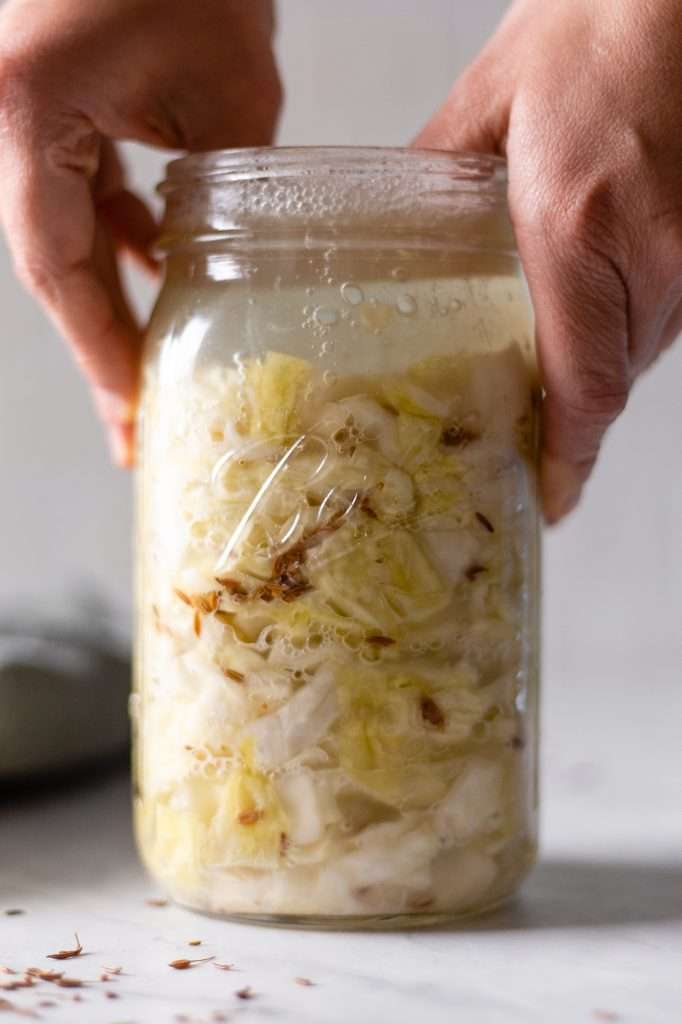
Wild heirloom culturing is also a salty fermentation process with beneficial wild microbes, but it is quite different. To wild heirloom culture vegetables, we use salty, acidic fermented sauerkraut brine (or any wild fermented vegetable brine; brine is the liquid in a jar of already fermented vegetables) and apple cider vinegar.
This fermentation method is more similar to yogurt fermentation than to something like sauerkraut fermentation… and it’s very similar to refrigerator pickling but with more salt and beneficial microbes included. My favorite vegetables to wild heirloom culture are red onions, cherry tomatoes, and mushrooms.
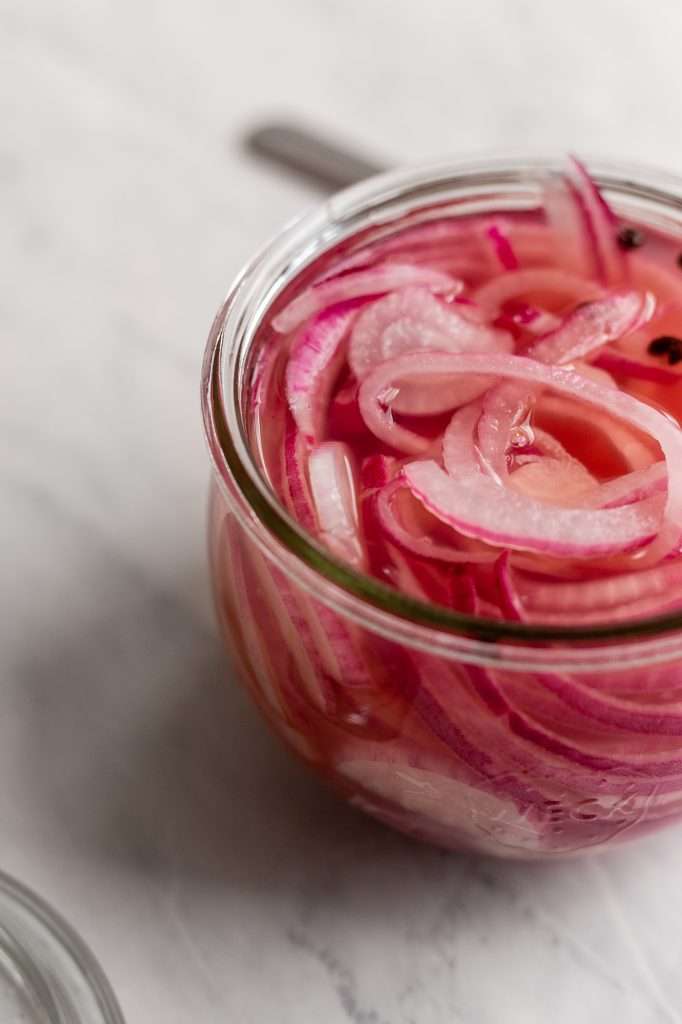
Lastly, there are high-salt fermentation methods called salt curing. Salt curing uses exceptionally high levels of salt to preserve ingredients.
While the other two methods usually include water, either added or from the vegetables themselves, salt curing does not. Curing is a “dry” process. No water is added, and so much salt is added that it reduces any water activity. Foods like miso and Moroccan preserved lemons are considered salt-cured. These foods still contain microbes but are not as microbially active as the previously discussed methods.

The Best Salt for Fermentation
Any salt will work for fermentation. Contrary to popular belief, even iodized salt works in fermentation. Though, some salts are much better for fermentation than others due to their trace mineral content. Trace minerals in salt can sometimes encourage more beneficial microbes to thrive in fermentation.
The four best salts to use in fermentation are:
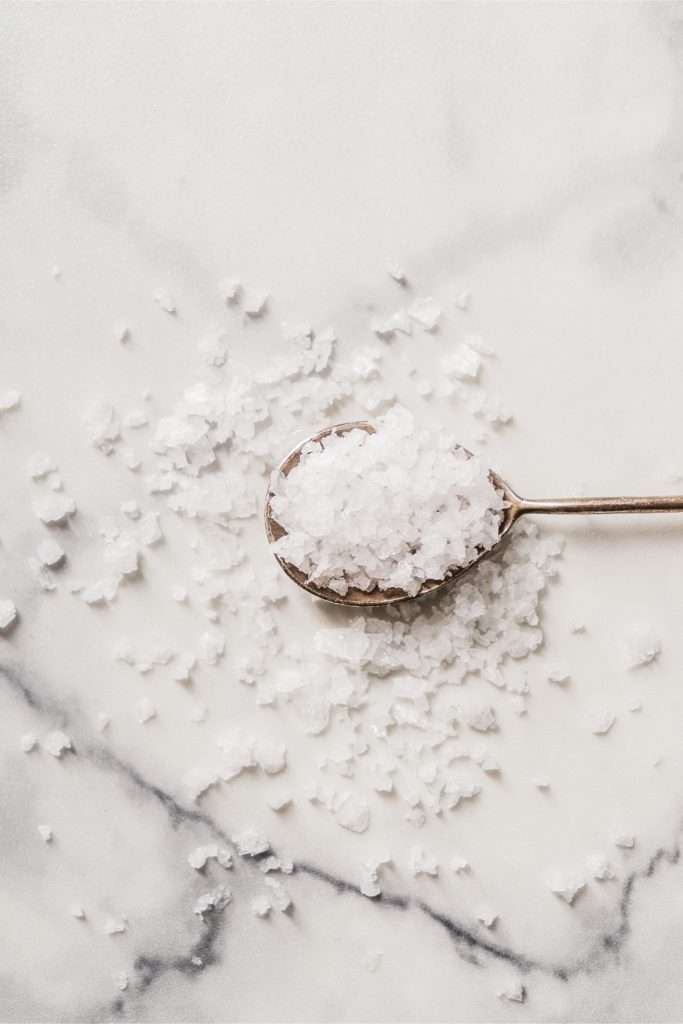
How Much Salt Should You Use?
How much salt you should use in fermentation depends on several factors. First and most importantly, what are you fermenting?
What you want to ferment determines which salt fermentation method you should use: wild fermentation, wild heirloom culturing, or salt curing.
To decide what method to use, you must look at the sugar and complex carbohydrate content. Don’t worry, though; I’ve broken it down for you. You’ll notice some things can be salt fermented using different methods.
I want you to note that I do not recommend wild fermentation with salt for sweet fruits and root vegetables. These can be added to cabbage sauerkraut with great results. However, they can be difficult to wild ferment and most often lead to alcohol fermentation instead of lacto fermentation. With high-sugar ingredients, it’s best to stick to drinks like kvass and making vinegar.
What to Wild Ferment:
- Cabbage
- Leafy cruciferous vegetables
- Cucumbers
- Bok choy
- Peppers
- Green beans
- Celery
- Swiss chard
- Zucchini
What to Wild Heirloom Culture:
- Tomatoes
- Onions, and the whole onion family
- Garlic
- all root vegetables
- Mushrooms
- Zucchini
What to Salt Cure:
- Beans and legumes (miso)
- Citrus fruits
- Other sweet fruits
- High fructose and fructan vegetables
- Root Vegetables
- Winter Squash
The Best Concentrations for Salt Fermentation
Now, when using wild fermentation, you should use different salt concentrations for different types of vegetables. The salt concentration is a total w/w salt concentration %. That means the salt we add is a % of the weight of all water-containing ingredients. Click here to learn how to calculate the grams of salt to use.
Before you get to the chart, I want to clarify the term “grows from a blossom.” I sometimes also call these “vine-growing vegetables.” This category includes anything that grows above the ground, from a flower on a vine-like or bushy plant. So, all the vegetables that are fruits: zucchini, eggplant, green beans, okra, yellow squash, corn, tomatillos, chayote, string beans, and snap peas.
For the best results, these are the salt concentrations I recommend when wild fermenting:

How to Measure Salt Correctly
To measure salt correctly for wild fermentation (lacto fermentation), you must use a kitchen scale to measure all ingredients.
The amount of salt you should use will depend on the type of vegetables you want to ferment and the weight of all the water-containing ingredients you add. Using grams (metric units) to measure your ingredients for wild fermentation is best.
Click here to learn how to calculate the grams of salt to use.
More Articles You’ll Enjoy
- The Perfect Lacto Fermentation Salt Ratio for Fermenting Vegetables
- A Guide to Water Kefir Grains
- How Long to Ferment Sauerkraut?



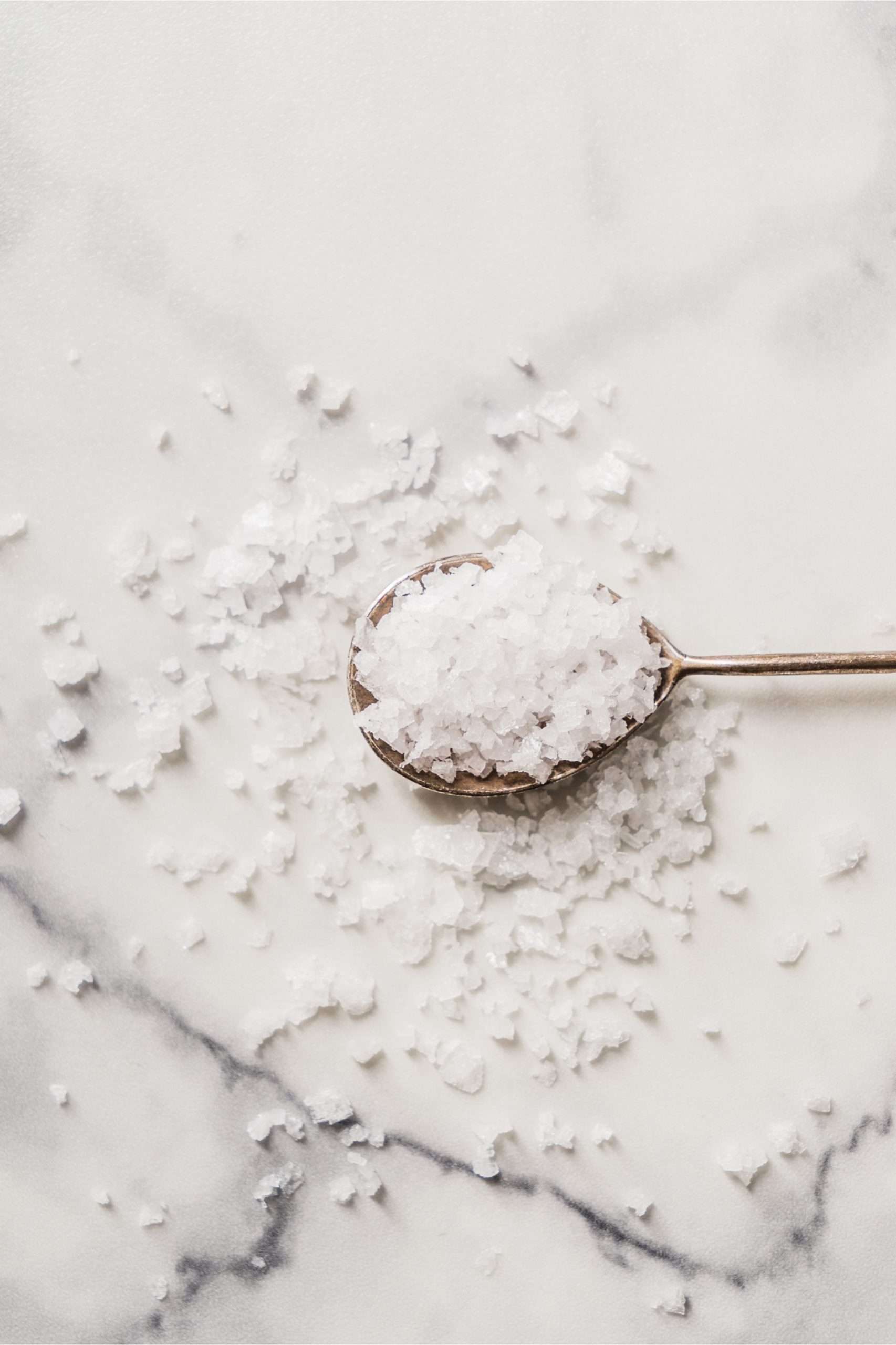














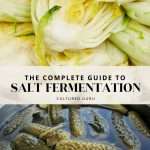
Thank you for your fermentation expertise, Kaitlynn. I appreciate the instruction and plan to employ it on my own.
You’re welcome! I’m glad you enjoyed this post!
Any recommendations for making your own salt blend for fermentation? I’ve been using the one you used to sell, but I’m almost out! I see it’s a mix of 4 types, but is there a preferred ratio?
I keep a jar of either your sauerkraut or dill pickle recipe fermenting on my counter at any given time 🙂
Thanks for the quick answer! I’ll be on the lookout for it, and in the meantime I’ll hit Red Stick Spice Company.
This is exactly what I’ve been looking for! The fascinating world of micro-organisms and their control of our environment (from our soil to hospital surgery theatres to our food right down to our intestinal flora) and our health can be overwhelming & mystifying at times. Your in-depth research and clear informative style of writing is truly a gift. I’m so excited to finally make my first big batch of sauerkraut, with enough confidence that I won’t be wasting valuable local organic produce. Thank you for sharing for the sake of educating – not for financial gain. I hope the micro-organisms populating your environment are as beneficial to you as your knowledge is to your readers.
Thanks for your very, very informative posts! Request: please make it easier to print from your site. Thanks.
thank you MS Fenly for sharing your wonderful knowledge when it comes to fermentation, . i find your post a bit easier to understand than my go to book, the art of fermentation by Sandor Katz.. i have been playing with the idea of making a fermented hot sauce.
wondering if it would be better to just use fermented peppers in recipe or trying to ferment all of the ingredients. i was also thinking of starting a base for making vinegar and fermenting the ingredients that way and if so i assume i could use a lower salt ratio…. i wish we went over this a little in culinary school.
Hi. Just wondering whether the mass versus volume debate is academic, in the sense that if veggies are +/- 95% water, does it really make any difference that the veggies are weighed with or without the water? We are only talking about a 5% variance.
Hi, I have been experimenting with lactic acid ‘fermentation’ of fresh organic tumeric root (not whole but thinly sliced). I have been using 2% salt and add a powdered starter culture, I leave it to ferment for 14 days. Fermented tumeric tea is widely consumed in Okinawa. Having read your comments regarding fermentation of root vegetables I am now questioning whether I am using the correct process. I believe the lactic acid fermentation process is used in Okinawa. Have you tried fermenting fresh tumeric root?
Root vegetables can be broken up into different categories: bulbs (like fennel, onions), corms (like celery root, water chestnut), rhizomes (like ginger, turmeric), taproots (like beets, carrots, parsnips), and tuberous roots (like sweet potatoes, yucca), and tubers (like potatoes, yams).
When I refer to root vegetables I’m talking about tubers, tuberous roots, and taproot vegetables, like beets, carrots, and sweet potatoes. Tubers and taproot vegetables store a lot of starch, which serves as a substrate that influences fermentation. Rhizomes like Ginger and Turmeric are vastly different and contain different compounds that influence microbial growth and fermentation in different ways.
Thank you for this. When you advise not to ferment root vegetables, do you mean all root vegetables? I’d like to ferment onions but it sounds like perhaps it’s not a good idea. Here you refer to carrots and beets, so just double checking.
There are alternate methods to fermenting root vegetables. Here I am stating that root vegetables do not ferment well with traditional wild fermentation. You can search “fermented onions” and “fermented carrots” here on our blog. I have recipes on how to ferment both in a safe and healthy way.
Hi Kaitlynn, I am looking for some advice. I started making sriracha sauce using red chilly or Fresno peppers. Used 2.5% salt for the mixture, but mixture is blended and I added 3 tablespoons of brown sugar. Total weight is about 1kg. Does this extra sugar lessens the need for more salt that you show in your chart ? Also, recipe for my previous batches that I made, call for boiling and adding vinegar. Which i followed. Is it possible to leave those two steps out and just use raw, fermented sauce? How long would it keep?
Thank you, in advance, Sergio
Finding your writing is a breath if fresh air. Thank you for being clear, concise, and including references!
Speaking of references, could you point me towards any regarding fermentation of eggs?
Do you know any good studies regarding the effects of potassium chloride or other salt substitutes on bacterial growth?
Hi. Thank your for going into such detail about the science behind lacto-fermentation. Understanding the full process takes the guess-work out of it. It makes perfect sense. I feel I’m on much firmer ground. I have a question. I’m going to ferment some cucumbers into pickles. The cucumbers had some waxy coating I had to wash off in Dawn dishwashing liquid. Now that I’ve washed everything off, how long will it take before the cucumbers have been populated with enough bacteria to be able to ferment them? Thank you for your help.
I do not suggest using wax-coated cucumbers for fermentation. Removing the wax with dawn dishwashing liquid would also remove all of the necessary fermentation microorganisms. Please see this recipe: https://cultured.guru/blog/fermented-dill-pickles-recipe there is a recipe in the blog and tips for choosing quality cucumbers for fermentation.
Kaitlin, what salt concentration would you recommend for celery stalk. Would that be the same for celery leaves? Thanks.
I’d use the same as I would for cabbage, so 2.5%
Hi! Your article was really helpful but I wanted to ask what percentage of salut would you recommend to ferment baby corn? I tried searching on internet but I did not find anything.
Tank you!
I’ve never fermented baby corn. Since it’s a little higher in sugar than other vegetables, I’d go with 3%
Hi! I’m back with an update on baby corn. I fermented it with 3% salt as you said and tasted after 4 weeks. It was delicious!
I’m growing my own corn right now and will make another batch as soon as it’ll be ready to harvest.
I wanted to ask you another question if you don’t mind. Do you think I could ferment sweet potato leaves? If so, what salt concentration should I use, 2,5% as you mentioned above for green leafy vegetables?
Thank you!
Hi Kaitlynn! Thank you for this article! The internet is full of incorrect brine calculations from “experts”. Yikes! I want to be sure I do this right and safely. Could I trouble you for a little more info? I want to ferment cauliflower, radish, and asparagus (all separately). What percentage of salt should I use? Thank you much,
Melisa
You’re welcome! You can try 2.5% to 3% salt… just a warning though, all of these vegetables smell horrible when fermented. lol
It’s not that they are bad or anything, the smell is just… intense.
I personally cannot stand the smell of fermented radishes.
Hi Kaitlynn,
I have one more question…. I really want to ferment salsa, actually I already have it in my jar. Most of the internet sources say to ferment for two days. Is this okay? I did squeeze the juice of one lime (that should bring the pH down). Thank you,
Melisa
Yeah, that’s okay because of the acid added from the lemon juice. But the salsa will definitely be effervescent and mostly have Leuconostoc bacteria in it, not many Lactobacillus.
😂. I will keep that in mind! I might be thinking twice on the radish. I fermented lemon pepper asparagus years ago. It was tasty, but I don’t remember the smell. Thank you so much for your speedy reply.
you use 2.5% brine for fermenting your roasted garlic. What salt % would be appropriate for fresh garlic cloves? Would you still need to add vinegar to achieve a safe pH? Would fermenting fresh garlic inhibit production of lactic acid?
hey there! I don’t use 2.5% brine. I use a 2.5% total salt concentration. You can use the same directions in my roasted garlic recipe for fresh garlic, and yes I still recommend adding vinegar. When using fresh garlic it will probably turn blue. Fresh garlic does not inhibit the production of lactic acid, but the byproducts produced when the garlic ferments can raise the pH.
Have you done any work or trials using salts other than NaCl? For example KCl, CaCl2, and ZnCl2. Would these alternatives effect the type of probiotic bacteria created? What about taste and texture?
How do you calculate the ratio of water content and produce? Because as you mention, sometimes the cabbage left in the store for too long and it does not release much water. That’s why we need to add water.
I have tried your recipe of traditional sauerkraut. The ratio of water/product is about 1/2 (about 250ml of water and 550g of cabbage). However, my guess is that cabbage release so little liquid, so my actual salt concentration is higher than expected ( > 2.5%) and I experienced some stomach cramp.
So my question is can I change the ratio of water/produce to 2/1. ( like 1000ml of water and 500g of cabbage ) for more consistent result?
Thank you!
If you had digestive issues, you should consult your doctor. You may just be eating too much sodium overall, other foods included. I can’t suggest recipe adjustments like this. There should always be more cabbage than water, for a properly acidified product. Make sure it is fermenting for a long enough time too. All cabbage based ferments should ferment for at least 21 days.
What an incredibly informative find, thank you!
Would you please give your brine recommendations for horseradish, jicama, and celery root.
Thank you!
I don’t ferment root vegetables like I ferment cabbage and other vegetables that grow above ground. I use a wild heirloom culturing method that I teach in our online course.
Hi Kaitlyn,
Quick question about fermenting garlic: can it be with dry cloves, by weighing salt and coating the cloves? Or should I use a brine and, if so, what is the best %?
BTW, discovering your emphasis on weighing had greatly increased my success rate–still had a couple of dud but overall, much better success–thank you!
With respect,
John Fox
hello!
You can salt-cure garlic, very silimar to the process for salt-curing lemons, but with much less liquid. I haven’t done it, though, so I don’t have a recipe for that. Glad you’re having a lot of success fermenting!
you are the best for a calculated process.
I really like your website. I’m wondering if you have any experience with fermenting whole tomatillos. I’ve been successful with all kinds of veggies but am challenged by these guys. The problem is that the fermentation doesn’t proceed reliably. For several jars, nothing really happens. For some others, it happens as expected (outgassing, getting hazy …), and for these, they are delicious. For all, even the failures, the pH is well below 4 after a week or so. It’s just that many jars end up basically marinated. I’ve tried with 2.5% and 3.5% salt by weight. Is it possible it’s the waxey coating? I basically just rub then with my hands under the faucet. Any ideas would be appreciated.
I’ve never fermented tomatillos before. So I can’t give you a sure answer. You can try adding some fresh cabbage leaves to the bottom of the jar to balance out the fermentation.
Hi Kaitlynn;
I find your site/blog credible (I cross check some of the facts in the scientific literature) and you make the info accessible and available – this is rare and all credit to you
I have a question about “all root vegetables” – what do you mean exactly? Some would consider all of the following “root vegetables”, but they are very different
Carrots, parsnips, celeriac, salisfy, beets, etc… all high sugar… very different botanical families
Kohl rabi, white turnip, rutubaga/yellow turnip/swede… all swollen stem bases of brassicas – fairly high water
Radishes – salad radishes, mooli, black radish, globe radish, etc…
Potatoes, sweet potatoes, Jerusalem artichokes, etc., essentially high starch, variable sugar, different families…
It seems to me that based on your classification, these would also fall into different categories, so do you have some views on this?
Thanks for your help
Glad you like the blog!
They do fall into different categories, as you’ve categorized them. I don’t like to wild ferment any root vegetables, no matter the category. I do incorporate root vegetables into sauerkrauts, but that’s the only way I wild ferment them. All of these vegetables grow in the rhizosphere, thus have a rhizosphere microbiome, and those wild rhizosphere microbes aren’t always great for lacto fermentation. All of the vegetables you listed have different levels and types of fermentable sugars, but all are higher in starches than vegetables that grow in the phyllosphere. So these vegetables naturally lean toward alcohol fermentation instead of lacto fermentation.
recipe for hot peppers in crock
you can scale up this recipe Fermented Peppers (How to Ferment Any Type of Pepper)
Have you fermented Asparagus? What category would it fit into? What would be the ideal fermentation method and/or salt concentration? Thanks